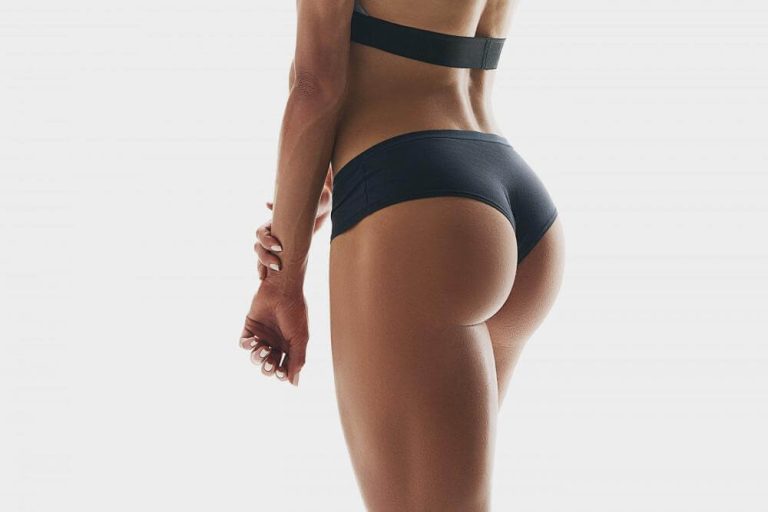Fat Transfer Breast Augmentation: Risks & Recovery Insights
Posted on: March 19, 2024
Breast Augmentation Explained
Procedure Basics
Breast augmentation, often referred to as implant surgery by plastic surgeons, is a surgical method to enhance breast size, shape, or fullness for fuller breasts, although it may result in scarring. It involves using implants or fat transfer techniques as a surgical procedure way to achieve fuller breasts with potential scarring to get the desired look. This procedure, including implant surgery to remove unwanted fat or reconstruct after breast cancer, can boost confidence and improve body image for many people.
Doctors use medical-grade materials for implants. They also meticulously plan the fat transfer process. Safety and patient satisfaction are top priorities.
Cosmetic vs Reconstructive
Cosmetic purposes mainly focus on enhancing the appearance. Women opt for this to increase size or adjust symmetry.
Reconstructive surgery serves a different need. It helps restore the breast’s appearance after injury or mastectomy, using a team to transplant fat cells. Both approaches have profound impacts on patients’ lives.
Popularity and Advances
The demand for breast augmentation has grown significantly. Its popularity reflects changing beauty standards and increased awareness of cosmetic procedures.
Advancements in technique have made surgeries safer and results more natural-looking. Surgeons now offer personalized plans based on individual body types and preferences.
Types of Breast Augmentation
Implants
Implants are a common choice for breast augmentation. There are two main types: silicone and saline.
Silicone implants offer a natural feel. They remain popular due to their soft texture. However, they pose risks if they rupture, as the silicone gel might spread in the breast area.
Saline implants consist of a saltwater solution. If these rupture, the body absorbs the saline safely. But, they can feel less natural compared to silicone.
Fat Transfer
Fat transfer breast augmentation uses fat from another part of your body. This breast method provides natural results and a lower risk of complications.
It involves liposuction to remove fat from areas like the abdomen, breasts, or thighs. Then, this fat is injected into the breasts. Recovery is generally quicker with fat transfer. Also, there’s no risk of implant-related issues.
Benefits
- Natural look and feel
- Lower complication risk
- Dual benefit of liposuction in donor sites
Drawbacks
- Limited increase in size
- Potential for fat reabsorption over time
Fat Transfer vs Breast Reconstruction
Fat Transfer
Fat transfer breast augmentation uses the patient’s own fat, harvested from other body parts, to enhance breast size and shape. This method is less invasive than traditional breast implants and avoids foreign materials in the body. It’s an excellent option for those seeking a moderate breast enhancement or looking to correct breast asymmetries without significant surgery.
Patients appreciate the dual benefit of reducing unwanted fat from areas like the abdomen or thighs while enhancing their breasts. However, it requires sufficient body fat for extraction, and there’s a limit to how much breast size increase one can achieve.
Breast Reconstruction
Breast reconstruction primarily serves patients recovering from mastectomy or significant breast injury. Unlike fat transfer, reconstruction often involves implants or tissue flaps to recreate the breast mound. This breast process can be more complex and might require multiple surgeries over time.
The goal of reconstruction is to restore the appearance of the breasts rather than significantly increase their size. It’s a crucial step in healing for many women post-cancer treatment, offering them a sense of normalcy and confidence in their breast bodies once again.
Considering Fat Transfer Augmentation
Candidate Criteria
To be a good candidate for fat transfer breast augmentation, individuals must meet specific criteria. They should have sufficient fat reserves in their breast and other parts of their body. This is crucial because the procedure involves transferring fat from one area to another, specifically for breast enhancement.
Having realistic expectations is also key. Patients should understand that while breast enhancements are achievable, dramatic changes may not always be possible.
Dual Benefits
One of the most appealing aspects of this breast procedure is its dual benefits. Not only does it allow for breast enhancement, but it also contours areas where fat is harvested. This could include the abdomen, thighs, or buttocks.
Patients appreciate the natural look and feel of their breasts post-procedure. Moreover, they enjoy an improved overall silhouette.
Limitations
Despite its advantages, there are limitations to consider. The procedure might not achieve a very large increase in breast size. Some patients might require multiple breast procedures to reach their desired outcome.
It’s important to have a thorough consultation with a qualified breast surgeon. They can provide insights into what can realistically be achieved based on individual body types and goals.
Contraindications for Fat Transfer
Health Status
Poor overall health can disqualify someone from undergoing fat transfer breast augmentation. This includes conditions like active infections or breast chronic diseases that impair healing. It’s crucial for patients to have a stable health condition to minimize risks during and after the procedure.
Doctors conduct thorough medical evaluations before proceeding. They assess the patient’s health history, current conditions, and medication use. This step ensures that only suitable candidates go through with the breast surgery.
Fat Availability
Not everyone has enough fat reserves for a successful breast transfer. Insufficient fat in donor areas like the abdomen, thighs, or buttocks can be a major obstacle for breast augmentation.
Surgeons need enough quality fat to harvest and purify for injection into the breasts. Patients lacking adequate fat deposits might need to consider alternative breast augmentation methods.
Breast Health Risks
Fat transfer carries specific risks related to breast health. Fat necrosis and calcification are notable concerns. These conditions can create lumps or harden areas within the breast tissue.
Such changes complicate mammograms and other breast health monitoring techniques. They can mimic or obscure signs of breast cancer, leading to diagnostic challenges.
Preparing for Fat Transfer Augmentation
Medication Management
Before undergoing fat transfer breast augmentation, it’s crucial to manage medications properly. Patients should stop certain medications and supplements at least two weeks prior. These include aspirin, ibuprofen, and vitamin E supplements. They increase the risk of bleeding during and after the procedure.
Consulting a healthcare provider for a personalized list is essential. They can offer breast alternatives that won’t interfere with surgery outcomes.
Weight Stability
Maintaining a stable weight before the breast procedure ensures lasting results. Significant weight fluctuations can affect the transferred fat’s appearance in the breasts.
Patients are advised to reach their target weight months before breast surgery. This stability helps achieve more predictable and satisfactory outcomes.
Surgeon Consultation
Scheduling consultations with the surgeon is key. These meetings allow patients to discuss their breast expectations and understand the breast procedure’s details. Surgeons explain how they will harvest and transfer fat to the breast, highlighting potential risks and recovery processes.
They also cover post-op care instructions for breast surgery, ensuring patients are fully prepared for recovery. This dialogue builds trust and confidence between breast patient and surgeon.
Recovery and Aftercare Strategies
Recovery Timeline
The recovery timeline for fat transfer breast augmentation generally spans a few weeks. Initially, patients might notice swelling and bruising. These symptoms typically begin to subside within the first week.
Patients can expect to return to light activities after this period following breast surgery. However, full recovery and the ability to resume all normal activities, including breast-related activities, may take up to six weeks.

Post-Operative Care
Following the surgeon’s post-operative instructions is crucial for a smooth recovery after breast surgery. This includes wearing compression garments, including breast support, to reduce swelling and support healing. Patients should also avoid strenuous activities that could impact the results of the breast surgery.
Adhering to these guidelines helps ensure the best possible outcome and minimizes complications.
Regular Follow-Ups
Regular follow-ups with the surgeon play a key role in monitoring breast progress. These appointments allow for adaptive management of any issues that arise during recovery. They also provide an opportunity for breast patients to address concerns and receive support.
Surgeons can offer personalized advice based on the patient’s healing process, ensuring optimal outcomes for breast surgery.
Final Remarks
Fat transfer breast augmentation offers a natural alternative, blending enhancement with body contouring. You’ve walked through its benefits, from a detailed explanation to breast recovery insights. It’s clear that while this method has specific contraindications, proper preparation can lead to successful outcomes. Remember, your journey doesn’t stop at choosing this breast procedure; understanding aftercare is crucial for optimal results.
If you’re considering this path to confidence, consult with a certified surgeon who can tailor the breast process to your needs. Your body deserves the best care, and armed with knowledge, you’re now better positioned to make informed decisions. Ready to take the next step? Reach out for a consultation today and embrace the change you seek.
Frequently Asked Questions
What is fat transfer breast augmentation?
Fat transfer breast augmentation is a procedure where fat from other parts of your body is harvested and injected into your breasts to enhance their size and shape, offering a more natural alternative to implants.
How does fat transfer differ from breast implants?
Unlike implants that introduce foreign materials, fat transfer uses your own body fat, aiming for a more natural look and feel. This method reduces the risk of rejection and complications associated with implants.
Who is an ideal candidate for fat transfer augmentation?
Ideal candidates are those looking for modest breast enlargement or reshaping, have adequate donor fat, and prefer natural results over synthetic implants. Good overall health is crucial.
What are the contraindications for undergoing fat transfer?
Individuals with very low body fat, certain blood disorders, severe chronic illnesses, or unrealistic expectations may not be suitable candidates for this procedure.
How should I prepare for a fat transfer breast augmentation?
Preparation includes maintaining good health, avoiding smoking and certain medications that may affect surgery outcomes. A detailed consultation with your surgeon will provide personalized instructions based on your health history.
What can I expect during recovery from fat transfer to breasts?
Expect mild soreness and swelling in both donor and recipient sites. Recovery varies but generally involves taking it easy for a few weeks, wearing supportive garments, and following your surgeon’s care instructions closely to ensure optimal healing.
Are there any long-term care strategies after fat transfer augmentation?
Long-term care involves regular check-ups to monitor the transferred fat’s integration. Maintaining a stable weight helps preserve results since significant weight fluctuations can affect breast size post-augmentation.





